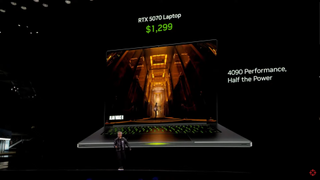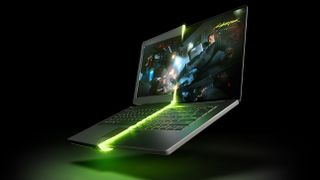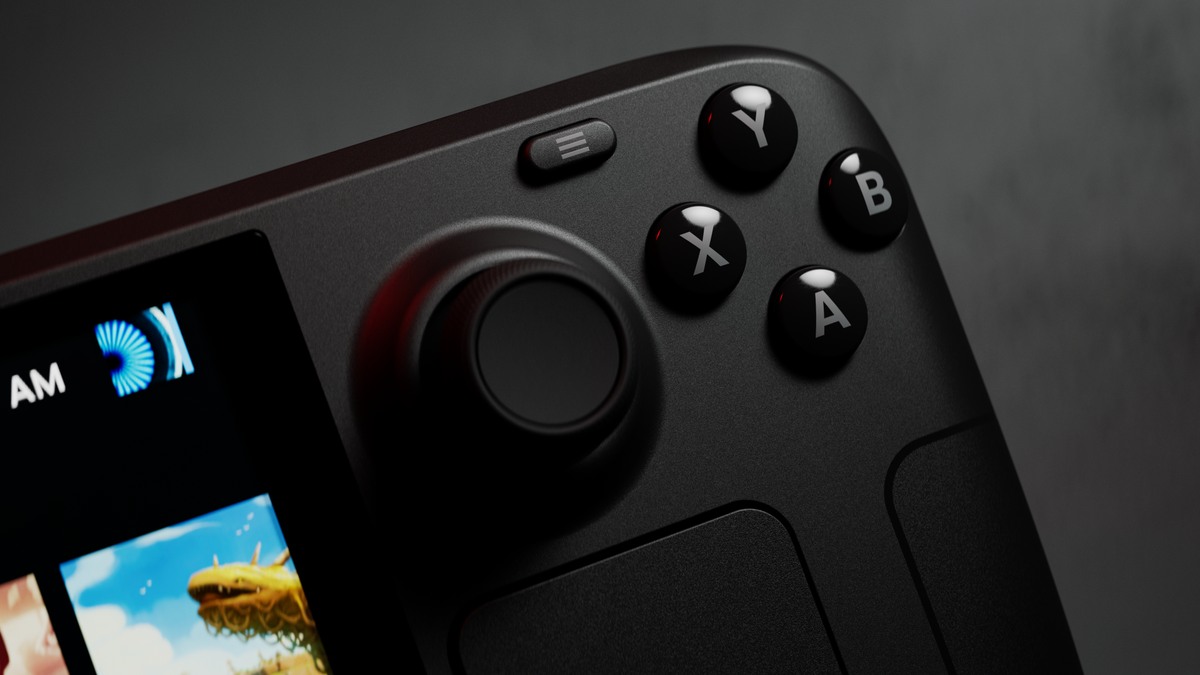Nvidia has announced the RTX 50-series (Blackwell) GPUs for laptops in parallel with its desktop family, promising a substantial lift in performance while preserving efficiency. Blackwell on mobile extends to the RTX 5090 laptop, featuring a massive 24GB VRAM, 50% more than the last generation. Retail availability is expected by March and April, and we're already seeing a compelling array of laptops showcased by partners as CES unfolds.
Kicking things off with the RTX 5090 laptop GPU, Nvidia has packed this beast with 10,496 CUDA cores for 84 Streaming Multiprocessors, almost mirroring the desktop RTX 5080. Employing 3GB GDDR7 modules likely from Samsung, the RTX 5090 laptop GPU is packaged with 24GB of VRAM despite the 256-bit interface.
Like all Blackwell, the revamped Tensor cores now support the FP4 datatype, with the RTX 5090 laptop GPU boasting 1,824 AI TOPS. TGP (Total Graphics Power) is paramount for GPU performance, and manufacturers can configure the RTX 5090 between 95W and 150W for every form factor and chassis.
The RTX 5080 laptop GPU drops to 7,680 CUDA cores (60 SMs) and retains 16GB of memory as its predecessor. Despite the reduction in core count, the RTX 5080 still packs a punch, capable of delivering 1,334 TOPS of AI performance with an 80-150W TGP. The RTX 5070 family is divided into the RTX 5070 Ti laptop GPU with 5,888 CUDA cores and 12GB of memory and the base RTX 5070 laptop GPU, limited to 4,608 cores with just 8GB of memory.
Swipe to scroll horizontally
| RTX 5090 Laptop | Blackwell | 10496 | 82 | 24GB | 256-bit | 1824 | 95 - 150W | $2,899 |
| RTX 5080 Laptop | Blackwell | 7680 | 60 | 16GB | 256-bit | 1334 | 80 - 150W | $2,199 |
| RTX 5070 Ti Laptop | Blackwell | 5888 | 46 | 12GB | 192-bit | 992 | 60 - 115W | $1,599 |
| RTX 5070 Laptop | Blackwell | 4608 | 36 | 8GB | 128-bit | 798 | 50 - 100W | $1,299 |
Nvidia showcased a slide during its presentation that detailed the price structure of these Blackwell mobile GPUs. Going by the data, the RTX 5090, RTX 5080, RTX 5070, and RTX 5070 Ti (all mobile) are set to cost $2,899, $2,199, $1,599, and $1,299 respectively. It's reasonable to assume this number represents the cost Nvidia's partners have to pay, so expect a higher price tag for retail RTX 50 laptops.
With Blackwell, Nvidia has introduced a suite of changes to its Max-Q technology, promising up to 40% longer battery life. Let's go over them breifly. Advanced Power Gating turns off unused parts of the GPU when not needed, while Low Latency Sleep allows the GPU to go to sleep frequently, which, according to Nvidia, can save power even when the GPU is being used. Other features include the ability to switch clocks within microseconds and the inclusion of voltage-optimized GDDR7 memory featuring "ultra" low-voltage states.

Performance is an important aspect, and so is efficiency since we're talking about laptops. Nvidia claims the (50-100W) RTX 5070 laptop GPU can match the RTX 4090 at half the power. Jensen showcased a desktop RTX 4090, so we can reasonably assume the desktop counterpart is the GPU used in the comparison. That's all fine and dandy, but wasn't the 250W RTX 5070 desktop on par with the RTX 4090? We'll have to wait for independent reviews, as Nvidia's first-party performance charts likely don't show the whole picture.

GeForce RTX 5090, RTX 5080, and RTX 5070 Ti laptops will be available in March, with the RTX 5070 laptop GPU scheduled a month later for April. We can expect many models from Nvidia's partners, including Acer, Asus, Dell, Gigabyte, HP, Lenovo, Mechrevo, MSI, and Razer.

 2 days ago
6
2 days ago
6









 English (US) ·
English (US) ·